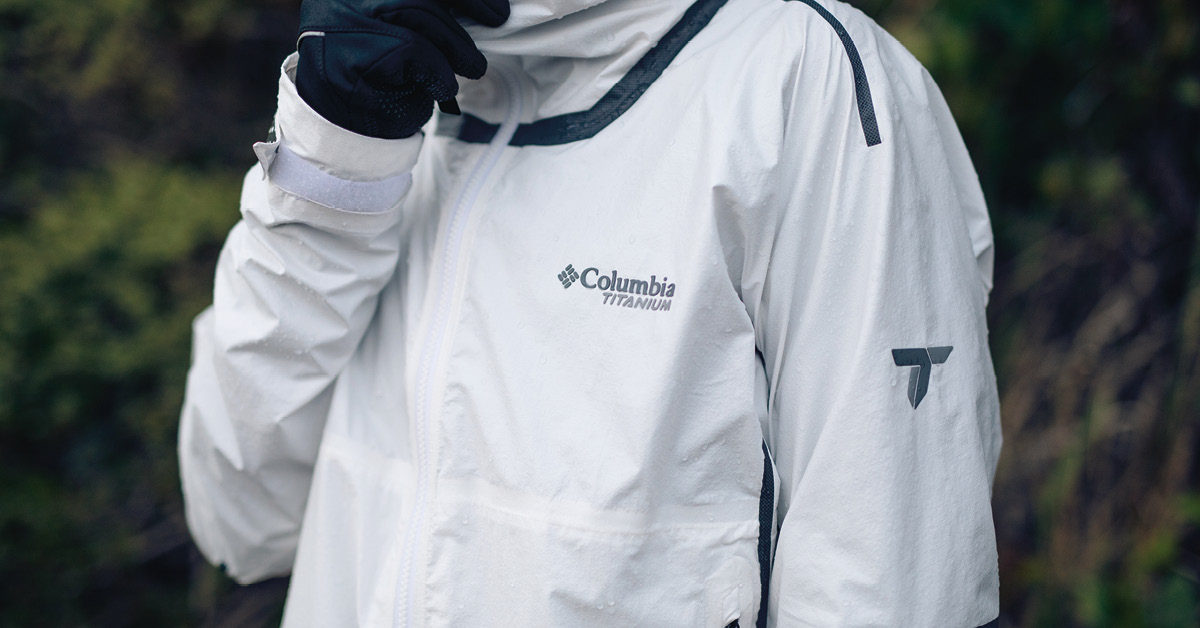Boxing Day 2023: the best deals from your favourite brands
Outdoor Activities | December 21, 2023
SAIL
January 21, 2022

What makes a good women’s or men’s rain jacket? If you’re looking to stay dry on rainy days, here are some tips from experts at Columbia that can help you make the right choice!
Look no further for details on what to look for when shopping for a rain jacket! Here are the 5 top factors you should consider:
Shop – Columbia men’s jacketsShop – Columbia women’s jackets
First off, it’s important to understand the different levels of water protection to find the right jacket for your needs.
Remember to choose a jacket that is either water resistant or waterproof, depending on your needs.
If you need a jacket that’s water-resistant for hiking in the rain, here are a few things to keep in mind:
If you need a jacket that’s highly water-resistant, whether you’re facing torrential downpours, snow or extended rainfall, and you don’t want to trap moisture and sweat in your jacket, opt for:
Liners are often made from synthetic materials like nylon, fleece or polyester. These synthetic materials can maintain a steady level of warmth and dry quickly.
There are different types of waterproof jackets to choose from that will protect you from the elements during your outdoor activities. You’ll need to factor in the type of activity you’ll be doing as well as the level of intensity. If you don’t need a jacket for a specific activity and you’re looking for protection under light rain, a jacket with a water-resistant membrane like Omni-Shield should do the trick.
Shop – Arcadia women’s jacket by Columbia
Shop – Watertight men’s jacket by Columbia
Shop – EvaPOURation men and women’s jacket by Columbia
Shop – Men’s soft shell Ampli-Dry jacket by Columbia
Shop – Men’s PFG Storm rain jacket by Columbia
If you’re planning on hitting the trails for a run, the last thing you want is a jacket that traps sweat.
To increase breathability, opt for a jacket with pit zips or ventilated pockets. Some highly breathable jackets are treated with a water-repellent finish instead of a membrane, which can be a great option for light rain or drizzle.
These qualities might not be on the top of your list, but if a jacket is lightweight and compressible, it can make all the difference on a days-long camping trip. If you’re carrying a heavy load, the last thing you’ll want to deal with is a bulky and heavy jacket!
Before choosing your jacket, find out what you need based on the activity you’ll be doing, how much storage you’ll have access to, and the type of transportation you’ll be using. Will you be trying to stuff your jacket into a small fanny pack or a hiking backpack? If you’re looking for an even more practical option, some jackets have a practical storage pocket built right into the jacket!
When you’re shopping for a rain jacket, be sure to take a good look at all the seams.
If you need something that’s completely watertight, examine the membrane and make sure that the seams and zippers are well sealed. LightRail™ zippers are bonded to laser-cut fabric with an adhesive that gives jackets a lighter, more streamlined look. They were designed to be waterproof.
If you don’t want to feel the wind through your clothes, rest assured. All jackets with water-resistant membranes offer this perk.
On the other hand, you might want good ventilation on runs or hikes up mountain peaks to ensure performance. Pit zips do just that. Plus, front pockets can let air in (if they’re not covered by backpack straps) and mesh-lined pockets provide great ventilation.
And don’t forget to make sure that your rain jacket is the right fit and that you’ll be fully protected—from head to waist to wrist. Does it have a hood? Wrist seals? Adjustable waist drawcord? That way, you can make sure it fits if you’re also wearing gloves, a hat and layers.
Depending on how frequently you use it, wash it regularly on the delicate cycle in cold water with gentle or water-based soap.
Tumble dry your rain jacket on low or hang it to dry. Always follow the washing instructions on the tag.